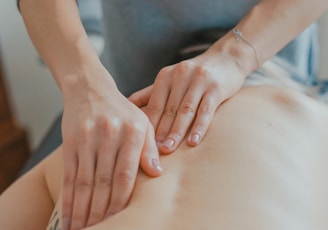Realign Disc Repair Protocol
These services are the way we get you better. Each treatment plan will combine the different treatment modalities listed below in a way that is specific to you, your condition, and where you are in your recovery journey.
Spinal Decompression
Nonsurgical spinal decompression works by gently stretching the spine, which takes pressure off the intervertebral discs, and creates negative pressure in the disc. As a result, bulging or herniated discs may retract, taking pressure off nerves and other structures in your spine. Decompression also helps promote the movement of water, oxygen, and nutrient-rich fluids into the discs to help them heal.
Chiropractic Care
Chiropractic care focuses on ensuring joints are moving properly. With many injuries, especially ones that have limited movement for an extended period of time, people tend to lose joint mobility and function.
Restoring proper joint movement and range of motion is an essential part of every treatment plan.






Rehabilitative Exercises
One of the most beneficial aspects of treatment, rehab exercises at Realign focus on increasing core strength and stability and enhancing spinal stabilizer strength.
When disc herniations occur most people avoid moving the affected area. The lack of movement causes the muscles in the area to lose strength, which decreases the functional ability of those muscles to provide stability to the spine.
Massage Therapy
Massage therapy is a powerful tool in injury healing, offering benefits that extend beyond relaxation. It helps reduce inflammation, improve circulation, and increase range of motion, all of which are crucial for accelerating the healing process. Massage therapy can also help alleviate pain and reduce scar tissue formation, facilitating a quicker and more effective recovery. By integrating massage into rehabilitation, patients can experience enhanced tissue healing and decreased recovery time.
Acupuncture
Acupuncture works by stimulating specific points on the body to promote natural healing processes and pain relief. Modern research supports its benefits, highlighting its role in reducing inflammation, improving blood circulation, and easing muscle tension and stiffness. Acupuncture is excellent as a complementary therapy for various injuries, offering a holistic approach to pain management and recovery, enhancing the body's innate ability to heal itself.






Electrical Muscle Stimulation
Electrical Muscle Stimulation (EMS) in healthcare practices offers notable benefits for injury healing. By delivering precise electrical impulses to the injured area, EMS encourages muscle activation and blood flow, crucial for tissue repair and pain reduction. It aids in restoring muscle function, reducing atrophy during periods of immobilization, and accelerates recovery by enhancing cellular repair processes. EMS is effective at facilitating quicker return to daily activities and improving outcomes for patients recovering from injuries.
